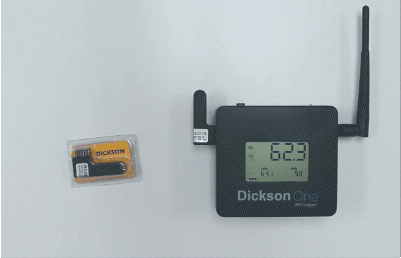What is it?
If you have a data logger or chart recorder, you probably have heard of calibration, and calibration has probably given you a headache. Calibration, or the process of checking and adjusting your measuring device to read temperature and humidity (or any variable, at that) more accurately is a difficult process. This process includes a lot of lost time and money, but is necessary to keep your data loggers or chart recorders reading temperature accurately.
There's good news: We invented the Replaceable Sensor.
It takes the week long calibration process, and makes it much, much faster.
How does it work?
Like this . . .

Is that it?
Yup, you just take off your new sensor, plug in the old one, and your device has been calibrated.
Okay, a bit more detail:
The key to our Replaceable Sensors, is that we separated the two functions of your data logger or chart recorder: measuring temperature and/or humidity and recording temperature and/or humidity.
Prior to the Replaceable Sensor, data loggers and chart recorders have measure the temperature and/or humidity of their environment internally, or inside the device, within the data logger or chart recorder.
With Replaceable Sensors, the temperature and/or humidity of your environment is measured on the Replaceable Sensor, which is separate from your device (see .GIF above).
So what does this mean for Calibrations?
When you calibrate a device, you are really only calibrating the part of the device that measures the temperature and/or humidity. The recording device (in the .GIF above, the big black box) has nothing to do with the calibration process. Formerly, this sensor would have been on the inside of the box, and our customers had to send their entire device back to us.
But no longer! Now, because the Sensor is separate from the data logger, the only thing that needs to be calibrated, is the sensor!
So now instead of packaging up your device and sending it back into us, and then waiting for us to calibrate it, you can just order a new sensor, pop the old one off, and put the new one on.
And to top it off . . . We include ALL the calibration data for the device on the sensor. You still receive your certificate, and you are still complying with auditors and regulations, in fact, better than ever before.
Last few things . . .
The benefits of Replaceable Sensors include:
- Faster calibrations
- More cost effective calibrations
- Less downtime
It's as simple as that!
